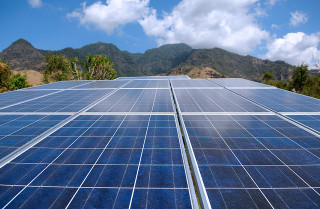Fossil fuel companies will benefit to the tune of $5.3 trillion in 2015 from government energy subsidies. That’s more than all the world’s governments spend on health care, according to new IMF (International Monetary Fund) research.
IMF’s new estimate of post-tax energy subsidies reveals that federal fossil-fuel subsidies “are dramatically higher than previously estimated, and are projected to remain high.” The results are contained in an IMF working paper entitled, “How Large are Global Energy Subsidies?”
Coming in advance of this year’s United Nations climate change conference in Paris this December, IMF’s estimate highlights the potential for governments to significantly reduce greenhouse gas emissions by eliminating fossil fuel subsidies. Fearing strong opposition from fossil fuel companies and their constituents, government leaders have yet to act decisively to end fossil fuel subsidies — despite ongoing calls from a wide range of public- and private-sector organizations, however.
A “shocking” new estimate of government fossil fuel subsidies
The IMF calls the dramatically higher estimate of government fossil fuel subsidies “shocking,” the Guardian reported. “The vast sum,” moreover, “is largely due to polluters not paying the costs imposed on governments by the burning of coal, oil and gas. These include the harm caused to local populations by air pollution as well as to people across the globe affected by the floods, droughts and storms being driven by climate change.”

Commenting on IMF’s study, Lord Nicholas Stern, climate economist at the London School of Economics, told the Guardian: “This very important analysis shatters the myth that fossil fuels are cheap by showing just how huge their real costs are. There is no justification for these enormous subsidies for fossil fuels, which distort markets and damages economies, particularly in poorer countries.”
Stern pointed out that even this new, dramatically higher estimate of government fossil fuel subsidies significantly underestimates the true, overall costs of our fossil fuel dependence. “A more complete estimate of the costs due to climate change would show the implicit subsidies for fossil fuels are much bigger even than this report suggests.”
IMF report authors highlight the costs society bears as a result of fossil fuel subsidies:
- Energy subsidies damage the environment, causing more premature deaths through local air pollution, exacerbating congestion and other adverse side effects of vehicle use, and increasing atmospheric greenhouse gas concentrations;
- Energy subsidies impose large fiscal costs, which need to be financed by some combination of higher public debt, higher tax burdens and crowding out of potentially productive public spending (for example, on health, education and infrastructure), all of which can be a drag on economic growth;
- Energy subsidies discourage needed investments in energy efficiency, renewables and energy infrastructure, and increase the vulnerability of countries to volatile international energy prices;
- Energy subsidies are a highly inefficient way to provide support to low-income households since most of the benefits from energy subsidies are typically captured by rich households.
IMF researchers zoomed in on post-tax consumer subsidies in producing their report. Post-tax consumer energy subsidies, IMF explains, “arise when consumer prices are below supply costs plus a tax to reflect environmental damage and an additional tax applied to all consumption goods to raise government revenues.”
2014 was the hottest year on record, according to the world’s national climate research organizations, and the first three months of 2015 has put global mean temperature on course to set a new annual record. The main driver, human-caused greenhouse gas emissions, continue to rise despite best efforts to curtail them.

Governments, and societies globally, stand to benefit greatly were fossil-fuel subsidies to be eliminated, IMF concluded. “These subsidies primarily reflect under-pricing from a domestic (rather than global) perspective, so even unilateral price reform is in countries’ own interests,” according to IMF’s report. “The potential fiscal, environmental and welfare impacts of energy subsidy reform are substantial.”
According to IMF’s report, eliminating fossil fuel subsidies would result in a 20 percent reduction of GHG emissions worldwide. “Ending the subsidies would also slash the number of premature deaths from outdoor air pollution by 50 percent – about 1.6 million lives a year,” according to the Guardian’s report.
Ending fossil fuel subsidies would also add substantial momentum to “green” innovation, job creation and sustainable economic development, IMF highlights. Doing so would be a big step towards achieving the goals set out by the community of nations in the U.N.’s Millennium Development Goals and succeeding Sustainable Development Goals.
Image credits: 1), 2) IMF, “How Large are Global Energy Subsidies?”; 3) UN
Featured image: Flickr/Tim Evanson
![]()









 FOLLOW ANDREW BURGER
FOLLOW ANDREW BURGER